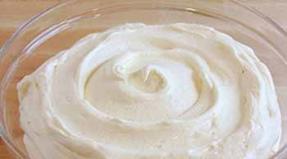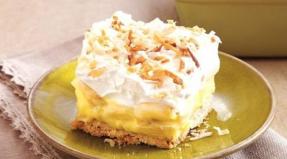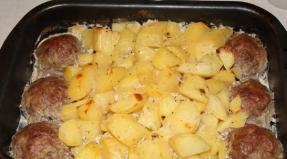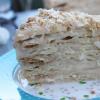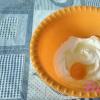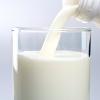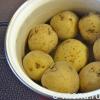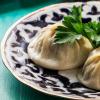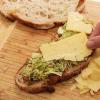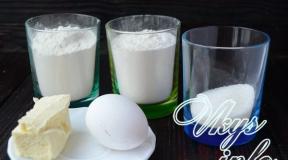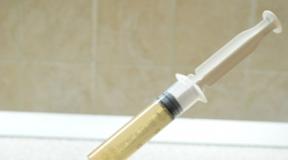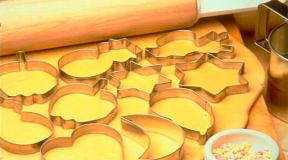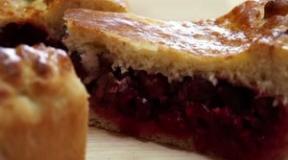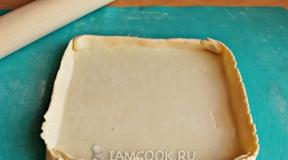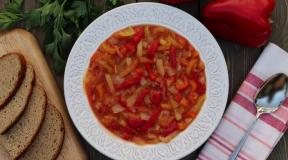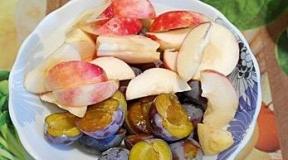The gost coffee drink is valid. Food concentrates
1.4.1, 3.2, 4.1
TU 18-4-59-85 *
________________
* The technical specifications mentioned here are the author's design. For more information refer to the link
5 REDISSION. August 2011
This standard applies to instant coffee beverages, which are extracts dried to a powdery state, obtained from roasted plant materials, intended for the instant preparation of drinks or as a flavoring additive in the production of various food products.
Requirements for products aimed at ensuring their safety for the life and health of the population are set out in 1.3.3, 2.2 and section 3.
1 Technical requirements
1 Technical requirements
1.1 Instant coffee drinks are produced in accordance with the requirements of this standard according to the current technological instructions in compliance with the sanitary rules approved in the prescribed manner.
1.2 Range
1.2.1 Depending on the type of raw material, instant coffee drinks are produced by the following names:
drinks with natural coffee without chicory - "Valgums", "Summer", "Yuzhny";
drinks with natural coffee and chicory - "Lvovskiy", "Maria", "Novost", "Chernomorskiy", "Tsikorno-apple";
drinks with chicory without natural coffee - "Vigor", "Kurzeme";
chicory drinks - "Instant chicory".
1.2.2 OKP codes for instant coffee drinks are given in Appendix 1.
1.3 Features
1.3.1 The organoleptic characteristics of instant coffee drinks must meet the requirements specified in Table 1.
Table 1
Indicator name | Characteristic | Analysis method |
Appearance | Powdery, no lumps allowed | |
Brown, varying degrees of intensity | ||
Taste and aroma | Characteristic of this product, depending on the type of raw material, without foreign taste and smell |
1.3.2 Physicochemical parameters of instant coffee drinks must comply with the standards specified in Table 2.
table 2
Indicator name | Analysis method |
|
Mass fraction of moisture,%, no more: | ||
at release from production | ||
by the end of the storage period | ||
Mass fraction of ash (calculated on dry weight),%, not less | ||
pH (drink), not less | According to GOST 29148 * |
|
Duration of complete dissolution, min, no more: | According to GOST 29148 |
|
in hot water (96-98 ° С) | ||
in cold water (18-20 ° С) | ||
Mass fraction of caffeine (calculated on dry weight),%, not less: | According to GOST 29148 |
|
when laying natural coffee in an amount,%: | ||
Mass fraction of metal impurities (particles no more than 0.3 mm in the largest linear dimension),%, no more | ||
Foreign impurities | Not allowed | |
Pest infestation of grain stocks | Not allowed | |
GOST R 51881-2002 (hereinafter). |
||
1.3.3 The content of toxic elements, mycotoxins and pesticides should not exceed the permissible levels established in the medical and biological requirements and sanitary standards for the quality of food raw materials and food products *, approved by the USSR Ministry of Health 01.08.89 N 5061.
_______________
* SanPiN 2.3.2.1078-2001 is in force on the territory of the Russian Federation.
1.3.4 The following raw materials and materials are used for the production of instant coffee drinks:
natural raw coffee of the first and second grades;
dried chicory for industrial processing according to the PCT of the RSFSR 286;
chicory soluble pasty according to NTD;
barley in accordance with GOST 5060, GOST 28672 *;
* On the territory of the Russian Federation, GOST R 53900-2010 is in force.
food rye in accordance with GOST 16990 *;
* On the territory of the Russian Federation, GOST R 53049-2008 is in force.
grape seeds for industrial processing according to NTD;
clarified apple juice of the first grade in accordance with GOST 656 *;
* On the territory of the Russian Federation, GOST R 52184-2003 is in force.
drinking water in accordance with GOST 2874 *;
__________________
* On the territory of the Russian Federation, GOST R 51232-98 is in force (hereinafter).
enzyme preparations approved for use in the food industry by the bodies of the State Sanitary and Epidemiological Supervision.
1.4 Packaging and labeling
1.4.1 Packaging and labeling of instant coffee drinks - in accordance with GOST 24508. The labels must contain information on nutritional and energy value (see Appendix 2).
2 Receiving
2.1 Acceptance rules - in accordance with GOST 15113.0.
2.2 Control over the content of toxic elements, mycotoxins and pesticides is carried out in accordance with the procedure established by the manufacturer of the products in agreement with the state sanitary supervision authorities and guaranteeing the safety of products.
2.3 The frequency of control of the mass fraction of ash and caffeine in beverages containing coffee in the recipe is determined at the frequency established by the manufacturer of the product, which guarantees these indicators, as well as at the request of the consumer and regulatory organizations.
3 Methods of analysis
3.1 Sampling and preparing them for analysis - in accordance with GOST 15113.0, GOST 26929.
3.2 Methods for determining the quality of packaging and labeling, net weight - in accordance with GOST 24508 and GOST 15113.1.
3.3 Analysis methods - according to GOST 15113.1, GOST 26927, GOST 26930 - GOST 26934 and specified in clauses 1.3.1, 1.3.2 of this standard.
3.5 Determination of organoleptic characteristics
The method consists in sensory assessment of appearance, color, aroma and taste.
3.5.1 Apparatus, dishes and materials
General purpose laboratory scales in accordance with GOST 24104 * with an LEL of 500 g and an admissible weighing error of no more than 0.02 g.
_________________
* From July 1, 2002, GOST 24104-2001 was put into effect. On the territory of the Russian Federation, GOST R 53228-2008 is in force (hereinafter).
Household electric stove in accordance with GOST 14919.
Glass 4 in accordance with GOST 9147.
Glass V-1-250 TS in accordance with GOST 25336.
Measuring cylinder 1 (3) -250 in accordance with GOST 1770.
Liquid glass thermometer with a measurement range of 0-100 ° C, with a scale division of 1 ° C in accordance with GOST 28498.
White writing paper in accordance with GOST 6656, GOST 18510.
Drinking water in accordance with GOST 2874.
It is allowed to use other measuring instruments with metrological characteristics not worse than the above.
3.5.2 Analysis
Organoleptic indicators are determined in the following sequence: appearance and color, aroma and taste.
3.5.2.1 Appearance and color are determined visually under daylight or fluorescent lighting in a portion of the combined product sample, placed on a sheet of white paper in an even layer.
3.5.2.2 Aroma is determined in dry product and beverage, taste - in beverage only.
To prepare a drink from a dry product containing natural coffee, take a sample weighing 3.5 g (not containing natural coffee - 5.0 g), place in a porcelain or glass beaker, pour 150 cm3 of hot water at a temperature of 96-98 ° C, stir, infuse for 1-2 minutes and determine the aroma of the infusion, taste and the absence of foreign odors.
4 Transport and storage
4.1 Transportation and storage conditions - according to GOST 24508.
4.2 Transport markings - in accordance with GOST 14192 * indicating the handling sign "Keep away from moisture".
________________
* The document is not valid on the territory of the Russian Federation. GOST 14192-96 is in effect. - Note from the manufacturer of the database.
4.3 The shelf life of instant coffee drinks is no more than 6 months from the date of production.
APPENDIX 1 (mandatory). OKP codes for instant coffee drinks
ANNEX 1
(required)
product name | |
Coffee drink "Kurzeme" in metal cans, net weight, g: | |
Instant chicory coffee drink in metal cans, net weight, g: | |
Coffee drink "Valgums" in metal cans, net weight, g: | |
Coffee drink "News" in metal cans, net weight, g: | |
Coffee drink "Summer" in metal cans, net weight, g: | |
Coffee drink "Lvovskiy" in metal cans, net weight, g: | |
Coffee drink "Maria" in metal cans, net weight, g: | |
Coffee drink "Vigor" in metal cans, net weight, g: | |
Coffee drink "Chicorno-apple" in metal cans, net weight, g: | |
Coffee drink "Black Sea" in metal cans, net weight, g: | |
Coffee drink "Yuzhny" in metal cans, net weight, g: | |
APPENDIX 2 (reference). Information on the nutritional and energy value of beverages
APPENDIX 2
(reference)
Content in 100 g of product:
Proteins - 9-12 g.
Carbohydrates - 40-65 g.
The amount of amino acids is 8-14 g.
Minerals (potassium, calcium, sodium, magnesium, manganese, etc.) - 2000-3000 mg.
Energy value - 378-382 kcal.
The caffeine content in 1 cup of the reconstituted drink (depending on the amount of coffee in the recipe) is 9-18 mg.
Electronic text of the document
prepared by JSC "Kodeks" and verified by:
official publication
Food concentrates. Technical conditions.
Analysis methods. Package. Marking:
Sat. GOSTs. - M .: Standartinform, 2011
Food concentrates. Instant coffee drinks, GOST R 50364-92
Food production. GOST R 50364-92: Food concentrates. Instant coffee drinks. Technical conditions. OKS: Food production, Tea. Coffee. Cocoa. GOSTs. Food concentrates. Instant coffee drinks. .... class = text>
GOST R 50364-92
Food concentrates. Instant coffee drinks. Technical conditions
GOST P 50364-92
Group Н56
STATE STANDARD OF THE RUSSIAN FEDERATION
FOOD CONCENTRATES
Instant coffee drinks
Technical conditions
Food concentrates. Instant coffee substitutes drinks. Specifications
OKS 67.140.20
OKP 91 9831, 91 9832
Date of introduction 1994-01-01
INFORMATION DATA
1 DEVELOPED AND INTRODUCED by the Scientific and Production Association of the food concentrate industry and special food technology
2 APPROVED AND PUT INTO EFFECT by the Decree of the State Standard of Russia dated 21.10.92 N 1425
3 REPLACE OST 10-19-86
4 REFERENCE REFERENCE DOCUMENTS
Item number, sub-item |
|
GOST 1770-74 | |
GOST 2874-82 | 1.3.4, 3.5.1 |
GOST 5060-86 | |
GOST 6656-76 | |
GOST 9147-80 | |
GOST 14192-77 | |
GOST 14919-83 | |
GOST 15113.0-77 | |
GOST 15113.1-77 | |
GOST 15113.2-77 | |
GOST 15113.4-77 | |
GOST 15113.8-77 | |
GOST 16990-88 | |
GOST 18510-87 | |
GOST 24104-88 | |
GOST 24508-80 | 1.4.1, 3.2, 4.1 |
GOST 25336-82 | |
GOST 26927-86 | |
GOST 26929-94 | |
GOST 26930-86 - GOST 26934-86 | |
GOST 28498-90 | |
GOST 28672-90 | |
GOST 29148-97 | |
RST RSFSR 286-82 | |
TU 18-4-59-85 * |
________________
* The technical specifications mentioned here are the author's design. For more information refer to the link. - Note from the manufacturer of the database.
5 REDISSION. August 2011
This standard applies to instant coffee beverages, which are extracts dried to a powdery state, obtained from roasted plant materials, intended for the instant preparation of drinks or as a flavoring additive in the production of various food products.
Requirements for products aimed at ensuring their safety for the life and health of the population are set out in 1.3.3, 2.2 and section 3.
1 Technical requirements
1 Technical requirements
1.1 Instant coffee drinks are produced in accordance with the requirements of this standard according to the current technological instructions in compliance with the sanitary rules approved in the prescribed manner.
1.2 Range
1.2.1 Depending on the type of raw material, instant coffee drinks are produced by the following names:
drinks with natural coffee without chicory - "Valgums", "Summer", "Yuzhny";
drinks with natural coffee and chicory - "Lvovskiy", "Maria", "Novost", "Chernomorskiy", "Tsikorno-apple";
drinks with chicory without natural coffee - "Vigor", "Kurzeme";
chicory drinks - "Instant chicory".
1.2.2 OKP codes for instant coffee drinks are given in Appendix 1.
1.3 Features
1.3.1 The organoleptic characteristics of instant coffee drinks must meet the requirements specified in Table 1.
Table 1
Indicator name | Characteristic | Analysis method |
Appearance | Powdery, no lumps allowed | |
Brown, varying degrees of intensity | ||
Taste and aroma | Characteristic of this product, depending on the type of raw material, without foreign taste and smell |
1.3.2 Physicochemical parameters of instant coffee drinks must comply with the standards specified in Table 2.
table 2
Indicator name | Analysis method |
|
Mass fraction of moisture,%, no more: | According to GOST 15113.4 |
|
at release from production | ||
by the end of the storage period | ||
Mass fraction of ash (calculated on dry weight),%, not less | According to GOST 15113.8 |
|
pH (drink), not less | According to GOST 29148 * |
|
Duration of complete dissolution, min, no more: | According to GOST 29148 |
|
in hot water (96-98 ° С) | ||
in cold water (18-20 ° С) | ||
Mass fraction of caffeine (calculated on dry weight),%, not less: | According to GOST 29148 |
|
when laying natural coffee in an amount,%: | ||
Mass fraction of metal impurities (particles no more than 0.3 mm in the largest linear dimension),%, no more | According to GOST 15113.2 |
|
Foreign impurities | Not allowed | According to GOST 15113.2 |
Pest infestation of grain stocks | Not allowed | According to GOST 15113.2 |
* On the territory of the Russian Federation, GOST R 51881-2002 is in force (hereinafter). |
||
1.3.3 The content of toxic elements, mycotoxins and pesticides should not exceed the permissible levels established in the medical and biological requirements and sanitary standards for the quality of food raw materials and food products *, approved by the USSR Ministry of Health 01.08.89 N 5061.
_______________
* SanPiN 2.3.2.1078-2001 is in force on the territory of the Russian Federation.
1.3.4 The following raw materials and materials are used for the production of instant coffee drinks:
natural raw coffee of the first and second grades;
dried chicory for industrial processing according to the PCT of the RSFSR 286;
chicory soluble pasty according to NTD;
barley in accordance with GOST 5060, GOST 28672 *;
* On the territory of the Russian Federation, GOST R 53900-2010 is in force.
food rye in accordance with GOST 16990 *;
* On the territory of the Russian Federation, GOST R 53049-2008 is in force.
grape seeds for industrial processing according to NTD;
clarified apple juice of the first grade in accordance with GOST 656 *;
* On the territory of the Russian Federation, GOST R 52184-2003 is in force.
drinking water in accordance with GOST 2874 *;
__________________
* On the territory of the Russian Federation, GOST R 51232-98 is in force (hereinafter).
enzyme preparations approved for use in the food industry by the bodies of the State Sanitary and Epidemiological Supervision.
1.4 Packaging and labeling
1.4.1 Packaging and labeling of instant coffee drinks - in accordance with GOST 24508. The labels must contain information about the nutritional and energy value (see Appendix 2).
2 Receiving
2.1 Acceptance rules - in accordance with GOST 15113.0.
2.2 Control over the content of toxic elements, mycotoxins and pesticides is carried out in accordance with the procedure established by the manufacturer of the products in agreement with the state sanitary supervision authorities and guaranteeing the safety of products.
2.3 The frequency of control of the mass fraction of ash and caffeine in beverages containing coffee in the recipe is determined at the frequency established by the manufacturer of the product, which guarantees these indicators, as well as at the request of the consumer and regulatory organizations.
3 Methods of analysis
3.1 Sampling and preparing them for analysis - in accordance with GOST 15113.0, GOST 26929.
3.2 Methods for determining the quality of packaging and labeling, net weight - in accordance with GOST 24508 and GOST 15113.1.
3.3 Analysis methods - according to GOST 15113.1, GOST 26927, GOST 26930 - GOST 26934 and specified in clauses 1.3.1, 1.3.2 of this standard.
3.5 Determination of organoleptic characteristics
The method consists in sensory assessment of appearance, color, aroma and taste.
3.5.1 Apparatus, dishes and materials
General purpose laboratory scales in accordance with GOST 24104 * with an LEL of 500 g and an admissible weighing error of no more than 0.02 g.
_________________
* From July 1, 2002, GOST 24104-2001 was put into effect. On the territory of the Russian Federation, GOST R 53228-2008 is in force (hereinafter).
Household electric stove in accordance with GOST 14919.
Glass 4 in accordance with GOST 9147.
Glass V-1-250 TS in accordance with GOST 25336.
Measuring cylinder 1 (3) -250 in accordance with GOST 1770.
Liquid glass thermometer with a measurement range of 0-100 ° C, with a scale division of 1 ° C in accordance with GOST 28498.
White writing paper in accordance with GOST 6656, GOST 18510.
Drinking water in accordance with GOST 2874.
It is allowed to use other measuring instruments with metrological characteristics not worse than the above.
3.5.2 Analysis
Organoleptic indicators are determined in the following sequence: appearance and color, aroma and taste.
3.5.2.1 Appearance and color are determined visually under daylight or fluorescent lighting in a portion of the combined product sample, placed on a sheet of white paper in an even layer.
3.5.2.2 Aroma is determined in dry product and beverage, taste - in beverage only.
To prepare a drink from a dry product containing natural coffee, take a sample weighing 3.5 g (not containing natural coffee - 5.0 g), place in a porcelain or glass beaker, pour 150 cm3 of hot water at a temperature of 96-98 ° C, stir, infuse for 1-2 minutes and determine the aroma of the infusion, taste and the absence of foreign odors.
4 Transport and storage
4.1 Transportation and storage conditions - according to GOST 24508.
4.2 Transport markings - in accordance with GOST 14192 * indicating the handling sign "Keep away from moisture".
________________
* The document is not valid on the territory of the Russian Federation. GOST 14192-96 is in effect. - Note from the manufacturer of the database.
4.3 The shelf life of instant coffee drinks is no more than 6 months from the date of production.
APPENDIX 1 (mandatory). OKP codes for instant coffee drinks
ANNEX 1
(required)
product name | |
Coffee drink "Kurzeme" in metal cans, net weight, g: | |
Instant chicory coffee drink in metal cans, net weight, g: | |
Coffee drink "Valgums" in metal cans, net weight, g: | |
Coffee drink "News" in metal cans, net weight, g: | |
Coffee drink "Summer" in metal cans, net weight, g: | |
Coffee drink "Lvovskiy" in metal cans, net weight, g: | |
Coffee drink "Maria" in metal cans, net weight, g: | |
Coffee drink "Vigor" in metal cans, net weight, g: | |
Coffee drink "Chicorno-apple" in metal cans, net weight, g: | |
Coffee drink "Black Sea" in metal cans, net weight, g: | |
Coffee drink "Yuzhny" in metal cans, net weight, g: | |
APPENDIX 2 (reference). Information on the nutritional and energy value of beverages
APPENDIX 2
(reference)
Jalapeno M Pepper Seeds 100 SEEDS NON-GMO
| $2.49 End Date: Saturday Jul-27-2019 18:12:47 PDT Buy It Now for only: $ 2.49 | |
| $2.49 End Date: Thursday Aug-29-2019 15:44:42 PDT Buy It Now for only: $ 2.49 |
GOST P 50364-92
Group Н56
STATE STANDARD OF THE RUSSIAN FEDERATION
FOOD CONCENTRATES
Instant coffee drinks
Technical conditions
Food concentrates. Instant coffee substitutes drinks. Specifications
OKS 67.140.20
OKP 91 9831, 91 9832
Date of introduction 1994-01-01
INFORMATION DATA
1 DEVELOPED AND INTRODUCED by the Scientific and Production Association of the food concentrate industry and special food technology
2 APPROVED AND PUT INTO EFFECT by the Decree of the State Standard of Russia dated 21.10.92 N 1425
3 REPLACE OST 10-19-86
4 REFERENCE REFERENCE DOCUMENTS
Item number, sub-item |
|
GOST 1770-74 | |
GOST 2874-82 | 1.3.4, 3.5.1 |
GOST 5060-86 | |
GOST 6656-76 | |
GOST 9147-80 | |
GOST 14192-77 | |
GOST 14919-83 | |
GOST 15113.0-77 | |
GOST 15113.1-77 | |
GOST 15113.2-77 | |
GOST 15113.4-77 | |
GOST 15113.8-77 | |
GOST 16990-88 | |
GOST 18510-87 | |
GOST 24104-88 | |
GOST 24508-80 | 1.4.1, 3.2, 4.1 |
GOST 25336-82 | |
GOST 26927-86 | |
GOST 26929-94 | |
GOST 26930-86 - GOST 26934-86 | |
GOST 28498-90 | |
GOST 28672-90 | |
GOST 29148-97 | |
RST RSFSR 286-82 | |
| TU 18-4-59-85 * |
________________
* The technical specifications mentioned here are the author's design. For more information refer to the link. - Note from the manufacturer of the database.
5 REDISSION. August 2011
This standard applies to instant coffee beverages, which are extracts dried to a powdery state, obtained from roasted plant materials, intended for the instant preparation of drinks or as a flavoring additive in the production of various food products.
Requirements for products aimed at ensuring their safety for the life and health of the population are set out in 1.3.3, 2.2 and section 3.
1 Technical requirements
1 Technical requirements
1.1 Instant coffee drinks are produced in accordance with the requirements of this standard according to the current technological instructions in compliance with the sanitary rules approved in the prescribed manner.
1.2 Range
1.2.1 Depending on the type of raw material, instant coffee drinks are produced by the following names:
drinks with natural coffee without chicory - "Valgums", "Summer", "Yuzhny";
drinks with natural coffee and chicory - "Lvovskiy", "Maria", "Novost", "Chernomorskiy", "Tsikorno-apple";
drinks with chicory without natural coffee - "Vigor", "Kurzeme";
chicory drinks - "Instant chicory".
1.2.2 OKP codes for instant coffee drinks are given in Appendix 1.
1.3 Features
1.3.1 The organoleptic characteristics of instant coffee drinks must meet the requirements specified in Table 1.
Table 1
Indicator name | Characteristic | Analysis method |
Appearance | Powdery, no lumps allowed | |
Brown, varying degrees of intensity | ||
Taste and aroma | Characteristic of this product, depending on the type of raw material, without foreign taste and smell |
1.3.2 Physicochemical parameters of instant coffee drinks must comply with the standards specified in Table 2.
table 2
Indicator name | Analysis method |
|
Mass fraction of moisture,%, no more: | According to GOST 15113.4 |
|
at release from production | ||
by the end of the storage period | ||
Mass fraction of ash (calculated on dry weight),%, not less | According to GOST 15113.8 |
|
pH (drink), not less | According to GOST 29148 * |
|
Duration of complete dissolution, min, no more: | According to GOST 29148 |
|
in hot water (96-98 ° С) | ||
in cold water (18-20 ° С) | ||
Mass fraction of caffeine (calculated on dry weight),%, not less: | According to GOST 29148 |
|
when laying natural coffee in an amount,%: | ||
Mass fraction of metal impurities (particles no more than 0.3 mm in the largest linear dimension),%, no more | According to GOST 15113.2 |
|
Foreign impurities | Not allowed | According to GOST 15113.2 |
Pest infestation of grain stocks | Not allowed | According to GOST 15113.2 |
| _______________ * On the territory of the Russian Federation, GOST R 51881-2002 is in force (hereinafter). |
||
1.3.3 The content of toxic elements, mycotoxins and pesticides should not exceed the permissible levels established in the medical and biological requirements and sanitary standards for the quality of food raw materials and food products *, approved by the USSR Ministry of Health 01.08.89 N 5061.
_______________
* SanPiN 2.3.2.1078-2001 is in force on the territory of the Russian Federation.
1.3.4 The following raw materials and materials are used for the production of instant coffee drinks:
natural raw coffee of the first and second grades;
dried chicory for industrial processing according to the PCT of the RSFSR 286;
chicory soluble pasty according to NTD;
barley in accordance with GOST 5060, GOST 28672 *;
_______________* On the territory of the Russian Federation, GOST R 53900-2010 is in force.
food rye in accordance with GOST 16990 *;
_______________* On the territory of the Russian Federation, GOST R 53049-2008 is in force.
grape seeds for industrial processing according to NTD;
clarified apple juice of the first grade in accordance with GOST 656 *;
_______________* On the territory of the Russian Federation, GOST R 52184-2003 is in force.
drinking water in accordance with GOST 2874 *;
__________________
* On the territory of the Russian Federation, GOST R 51232-98 is in force (hereinafter).
enzyme preparations approved for use in the food industry by the bodies of the State Sanitary and Epidemiological Supervision.
1.4 Packaging and labeling
1.4.1 Packaging and labeling of instant coffee drinks - in accordance with GOST 24508. The labels must contain information about the nutritional and energy value (see Appendix 2).
2 Receiving
2.1 Acceptance rules - in accordance with GOST 15113.0.
2.2 Control over the content of toxic elements, mycotoxins and pesticides is carried out in accordance with the procedure established by the manufacturer of the products in agreement with the state sanitary supervision authorities and guaranteeing the safety of products.
2.3 The frequency of control of the mass fraction of ash and caffeine in beverages containing coffee in the recipe is determined at the frequency established by the manufacturer of the product, which guarantees these indicators, as well as at the request of the consumer and regulatory organizations.
3 Methods of analysis
3.1 Sampling and preparing them for analysis - in accordance with GOST 15113.0, GOST 26929.
3.2 Methods for determining the quality of packaging and labeling, net weight - in accordance with GOST 24508 and GOST 15113.1.
3.3 Analysis methods - according to GOST 15113.1, GOST 26927, GOST 26930 - GOST 26934 and specified in clauses 1.3.1, 1.3.2 of this standard.
3.5 Determination of organoleptic characteristics
The method consists in sensory assessment of appearance, color, aroma and taste.
3.5.1 Apparatus, dishes and materials
General purpose laboratory scales in accordance with GOST 24104 * with an LEL of 500 g and an admissible weighing error of no more than 0.02 g.
_________________
* From July 1, 2002, GOST 24104-2001 was put into effect. On the territory of the Russian Federation, GOST R 53228-2008 is in force (hereinafter).
Household electric stove in accordance with GOST 14919.
Glass 4 in accordance with GOST 9147.
Glass V-1-250 TS in accordance with GOST 25336.
Measuring cylinder 1 (3) -250 in accordance with GOST 1770.
Liquid glass thermometer with a measurement range of 0-100 ° C, with a scale division of 1 ° C in accordance with GOST 28498.
White writing paper in accordance with GOST 6656, GOST 18510.
Drinking water in accordance with GOST 2874.
It is allowed to use other measuring instruments with metrological characteristics not worse than the above.
3.5.2 Analysis
Organoleptic indicators are determined in the following sequence: appearance and color, aroma and taste.
3.5.2.1 Appearance and color are determined visually under daylight or fluorescent lighting in a portion of the combined product sample, placed on a sheet of white paper in an even layer.
3.5.2.2 Aroma is determined in dry product and beverage, taste - in beverage only.
To prepare a drink from a dry product containing natural coffee, take a sample weighing 3.5 g (not containing natural coffee - 5.0 g), place in a porcelain or glass beaker, pour 150 cm3 of hot water at a temperature of 96-98 ° C, stir, infuse for 1-2 minutes and determine the aroma of the infusion, taste and the absence of foreign odors.
4 Transport and storage
4.1 Transportation and storage conditions - according to GOST 24508.
4.2 Transport markings - in accordance with GOST 14192 * indicating the handling sign "Keep away from moisture".
________________
* The document is not valid on the territory of the Russian Federation. GOST 14192-96 is in effect. - Note from the manufacturer of the database.
4.3 The shelf life of instant coffee drinks is no more than 6 months from the date of production.
APPENDIX 1 (mandatory). OKP codes for instant coffee drinks
ANNEX 1
(required)
product name | |
Coffee drink "Kurzeme" in metal cans, net weight, g: | |
Instant chicory coffee drink in metal cans, net weight, g: | |
Coffee drink "Valgums" in metal cans, net weight, g: | |
Coffee drink "News" in metal cans, net weight, g: | |
Coffee drink "Summer" in metal cans, net weight, g: | |
Coffee drink "Lvovskiy" in metal cans, net weight, g: | |
Coffee drink "Maria" in metal cans, net weight, g: | |
Coffee drink "Vigor" in metal cans, net weight, g: | |
Coffee drink "Chicorno-apple" in metal cans, net weight, g: | |
Coffee drink "Black Sea" in metal cans, net weight, g: | |
Coffee drink "Yuzhny" in metal cans, net weight, g: | |
APPENDIX 2 (reference). Information on the nutritional and energy value of beverages
APPENDIX 2
(reference)
Proteins - 9-12 g.
Carbohydrates - 40-65 g.
The amount of amino acids is 8-14 g.
Minerals (potassium, calcium, sodium, magnesium, manganese, etc.) - 2000-3000 mg.
Energy value - 378-382 kcal.
Coffee drinks are powdered mixtures made from cereals, chicory, acorns, legumes, walnut seeds, rose hips and other raw materials with or without natural coffee. These drinks taste like coffee and are intended for people with cardiovascular diseases. Depending on the recipe, coffee drinks are divided into three types: containing natural coffee (Our brand, Jubilee, Druzhba, Morning, etc.); containing chicory, but without the addition of natural coffee (Chicory, Barley, Baltika, Health, etc.); not containing natural coffee and chicory (Acorn, Golden Ear, Amateur, etc.).
Instant coffee drinks are an extract dried to a powdery state, obtained from roasted plant materials (chicory, barley, rye, natural coffee), and are intended for the preparation of instant drinks. Depending on the type of raw material, instant coffee drinks are produced in the following names:
· Drinks with natural coffee without chicory (Summer, South);
· Drinks with natural coffee and chicory (Maria, Novost);
· Drinks with chicory without natural coffee (Vivacity);
· Drinks from chicory (instant chicory).
Coffee and coffee drinks are packed in dense paper boxes or bags with a parchment insert weighing from 50 to 250 g, as well as in metal, glass jars of 50-200 g each. Store in clean, dry rooms with a relative humidity of no more than 75%. The guaranteed shelf life of coffee is from 6 to 18 months, depending on the type of coffee and packaging methods. The shelf life of imported coffee is stipulated by the terms of the contract; it can be set up to 2 years, depending on the type of packaging.
The organoleptic characteristics of instant coffee drinks must meet the requirements specified in table 5.
Table 5 - Requirements for powdered coffee drinks
Proteins - 9-12 g;
· Carbohydrates - 40-65 g;
· The amount of amino acids - 8-14 g;
· Minerals (potassium, calcium, sodium, magnesium, manganese, etc.) - 2000-3000 mg.
· Energy value - 378-382 kcal.
Physicochemical parameters of instant coffee drinks must comply with the standards specified in table 6.
Table 6 - Physical and chemical parameters of instant coffee drinks
